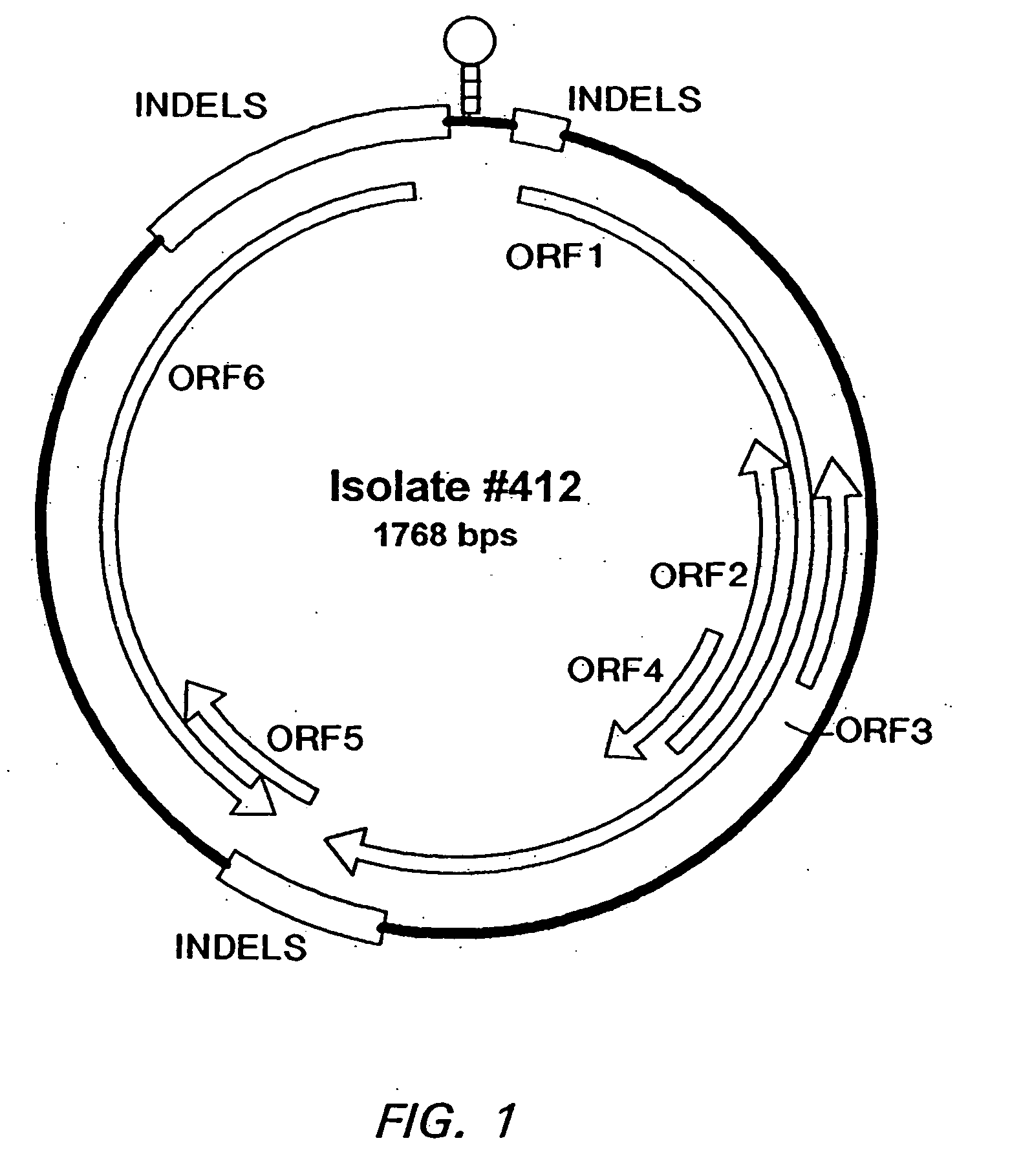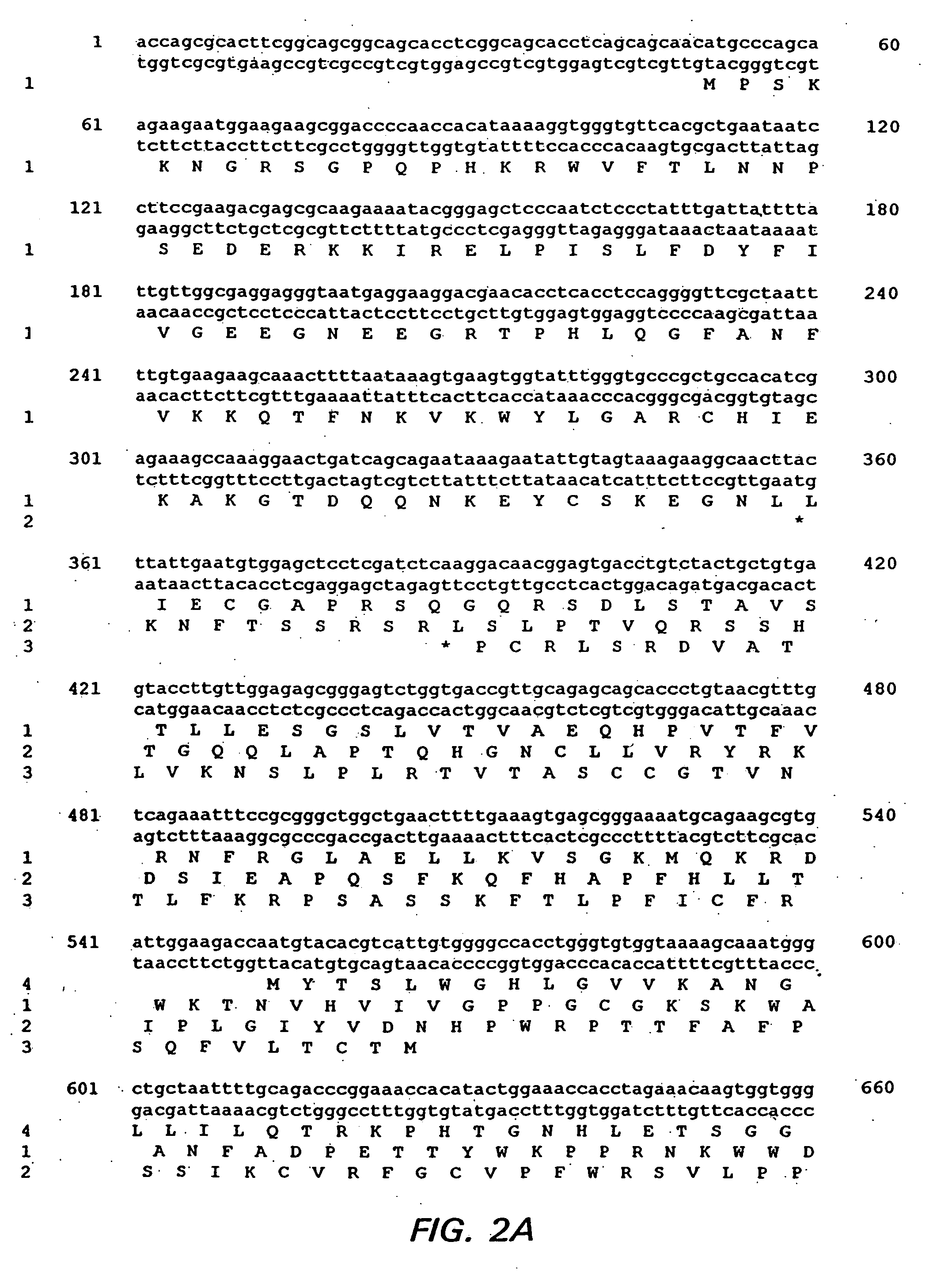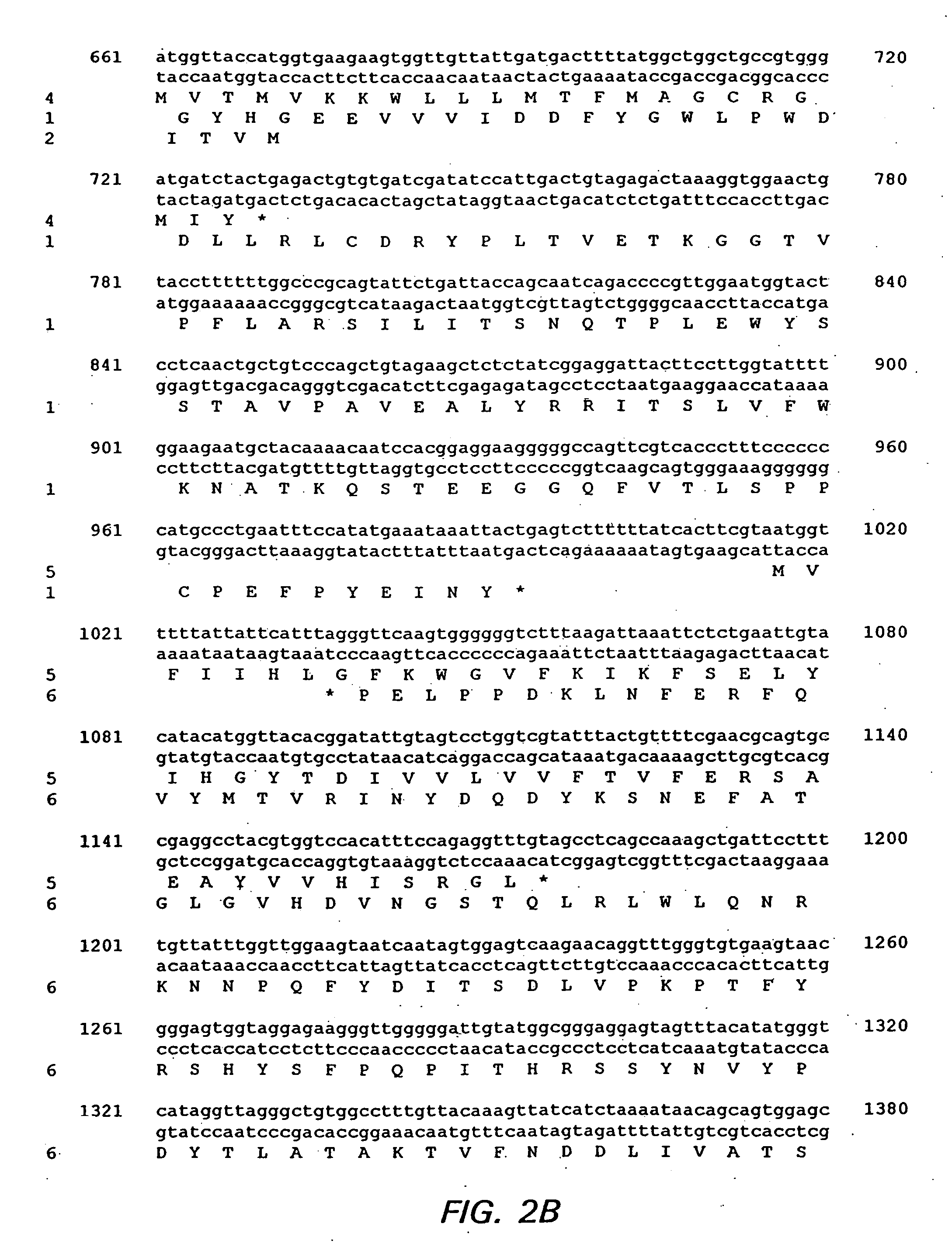Postweaning multisystemic wasting syndrome and porcine circovirus from pigs
a multi-systemic, wasting syndrome and porcine circovirus technology, applied in the field of viruses, can solve the problems of high mortality rate in weaned pigs, high contagiousness, and etiologic association of pcv with pmws questioned
- Summary
- Abstract
- Description
- Claims
- Application Information
AI Technical Summary
Benefits of technology
Problems solved by technology
Method used
Image
Examples
example 1
PMWS Reproduction
[0163] PMWS has not been reproduced under controlled conditions, nor have etiology studies been performed. In order to determine the causative agent of this disease, a number of tissues were collected from PMWS-affected pigs, as described above in Materials and Methods, and studied. Lymph nodes displayed the most apparent gross lesions, histopathological changes and circovirus infection was confirmed by immunostaining. Accordingly, the lymph nodes were used in the challenge experiments described above.
[0164] The challenge experiments, conducted as described in Materials and Methods were successful in producing PMWS in pigs. In particular, some piglets died of the infection and asymptomatically infected piglets developed PMWS-like microscopic lesions by the end of the trial.
[0165] In another challenge experiment, the starting material used was lung tissue of pig with chronic wasting and lymph node enlargement. These clinical signs are characteristic of PMWS. The t...
example 2
Isolation and Propagation of PCVII
[0173] To determine the presence of an infectious causative agent(s) for PMWS, various tissues from pig #412, an experimentally challenged piglet sacrificed 21 days post-infection, were used for viral isolation. After continued passage of lymph node samples from pig #412 in Dulac cells, virus accumulation or adaptation was observed. A unique pattern of cytopathic effect initially developed, followed by increasing virus titer, as determined by ELISA using the standard Berlin anti-PCV antibody, as described above.
[0174] The existence of circovirus in Dulac cells infected with isolate PCVII 412 was then detected by electron microscopic examination. After six passages, viral structure proteins could be detected consistently, using a western blot assay.
example 3
Specific Anti-PCVII Antibodies in Asymptomatically Infected and Convalescent Piglets in PMWS-Affected Herds
[0175] Because it appeared that porcine circoviruses possessed some heterogeneity, ELISAs were performed using sera of piglets, collected from a herd with a PMWS outbreak, against the PCV and isolate PCVII 412 virus. Most of the asymptomatically PCVII-infected and convalescent piglets developed specific antibodies against PCVII, not PCVI.
PUM
| Property | Measurement | Unit |
|---|---|---|
| Fraction | aaaaa | aaaaa |
| Mass | aaaaa | aaaaa |
| Fraction | aaaaa | aaaaa |
Abstract
Description
Claims
Application Information
 Login to View More
Login to View More - R&D
- Intellectual Property
- Life Sciences
- Materials
- Tech Scout
- Unparalleled Data Quality
- Higher Quality Content
- 60% Fewer Hallucinations
Browse by: Latest US Patents, China's latest patents, Technical Efficacy Thesaurus, Application Domain, Technology Topic, Popular Technical Reports.
© 2025 PatSnap. All rights reserved.Legal|Privacy policy|Modern Slavery Act Transparency Statement|Sitemap|About US| Contact US: help@patsnap.com



